-
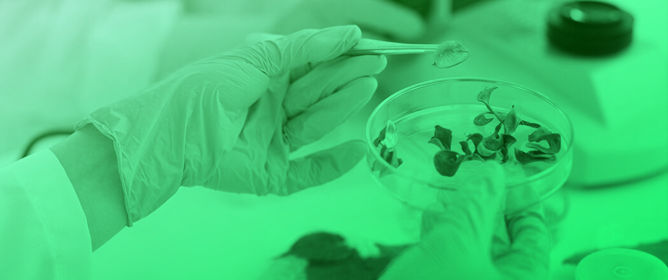 Comparative Feasibility and Environmental Life Cycle Assessment of Cotton Stalks Gasification and Pyrolysis
Comparative Feasibility and Environmental Life Cycle Assessment of Cotton Stalks Gasification and Pyrolysis -
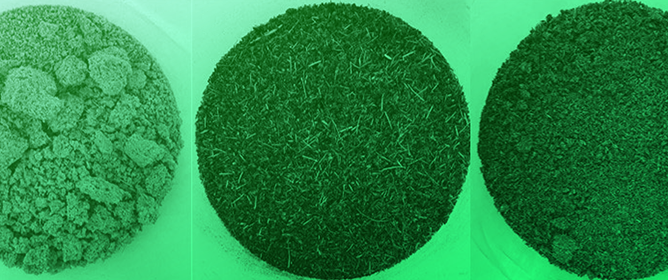 Extraction of Cellulases Produced through Solid-State Fermentation by Trichoderma reesei CCT-2768 Using Green Coconut Fibers Pretreated by Steam Explosion Combined with Alkali
Extraction of Cellulases Produced through Solid-State Fermentation by Trichoderma reesei CCT-2768 Using Green Coconut Fibers Pretreated by Steam Explosion Combined with Alkali -
 State of the Art Review of Attributes and Mechanical Properties of Hempcrete
State of the Art Review of Attributes and Mechanical Properties of Hempcrete
Journal Description
Biomass
Biomass
is an international, peer-reviewed, open access journal on biomass conversion and biorefinery published quarterly online by MDPI.
- Open Access— free for readers, with article processing charges (APC) paid by authors or their institutions.
- High Visibility: indexed within Scopus, EBSCO, and other databases.
- Rapid Publication: manuscripts are peer-reviewed and a first decision is provided to authors approximately 19 days after submission; acceptance to publication is undertaken in 15.8 days (median values for papers published in this journal in the second half of 2023).
- Recognition of Reviewers: APC discount vouchers, optional signed peer review, and reviewer names published annually in the journal.
Latest Articles
Algae: Nature’s Renewable Resource for Fuels and Chemicals
Biomass 2024, 4(2), 329-348; https://doi.org/10.3390/biomass4020016 - 16 Apr 2024
Abstract
►
Show Figures
Microalgae-based renewable energy, industrial chemicals, and food have received great attention during the last decade. This review article highlights the versatility of algal biomass as a feedstock for producing various commodities and high-value products, including aromatic hydrocarbons and lipids within biorefinery systems. Lipid
[...] Read more.
Microalgae-based renewable energy, industrial chemicals, and food have received great attention during the last decade. This review article highlights the versatility of algal biomass as a feedstock for producing various commodities and high-value products, including aromatic hydrocarbons and lipids within biorefinery systems. Lipid content and the composition of algal biomass cultivated in various media, specifically in wastewater streams generated at agricultural and industrial production facilities, are reviewed. Technical and chemical aspects of algal biomass conversion via thermochemical techniques including pyrolysis, hydrothermal liquefaction, and hydrothermal carbonization are discussed. The properties of the final products are reviewed based on the conversion process employed. Studies published within the last 5 years are reviewed. The importance of further research on inexpensive and more effective catalysts and the development of downstream processes to upgrade crude products obtained from thermal conversion processes is emphasized. This review concludes with an in-depth discussion of the opportunities and challenges involved in algal biomass-based bioproduct manufacturing and commercialization.
Full article
Open AccessReview
Biotransformation of Pollutants by Pycnoporus spp. in Submerged and Solid-State Fermentation: Mechanisms, Achievements, and Perspectives
by
Vinícius Mateus Salvatori Cheute, Thaís Marques Uber, Luís Felipe Oliva dos Santos, Emanueli Backes, Marina Proença Dantas, Alex Graça Contato, Rafael Castoldi, Cristina Giatti Marques de Souza, Rúbia Carvalho Gomes Corrêa, Adelar Bracht and Rosane Marina Peralta
Biomass 2024, 4(2), 313-328; https://doi.org/10.3390/biomass4020015 - 16 Apr 2024
Abstract
►▼
Show Figures
Substantial amounts of organo-pollutants, often persistent and toxic, are generated globally each year, posing a threat to soil, water, groundwater, and air. The pollutants encompass a wide range of substances from various sources, which include solid as well as liquid ones, such as
[...] Read more.
Substantial amounts of organo-pollutants, often persistent and toxic, are generated globally each year, posing a threat to soil, water, groundwater, and air. The pollutants encompass a wide range of substances from various sources, which include solid as well as liquid ones, such as landfill leachates and wastewaters. The compounds include paper and pulp mill byproducts, pharmaceuticals, diverse types of plastics, hydrocarbons, pigments, and dyes, as well as pesticides and insecticides. Fungal bioremediation stands out as a promising technology that uses the metabolic potential of fungi to eliminate or mitigate the impact of pollutants. Notably, species of the genus Pycnoporus exhibit significant capabilities for degrading a broad spectrum of toxic molecules. This degradation is facilitated by released ligninolytic enzymes, especially laccase, and cellular enzymes pertaining to the cytochrome P450 monooxygenase system. The laccase, which is overproduced by the genus Pycnoporus, is quite remarkable for its high redox potential. The objective of this review is to highlight the proficiency of the Pycnoporus genus in the degradation of pollutants in submerged and solid-state fermentation. Recent studies conducted over the past decade consistently highlight the Pycnoporus genus as a robust contender in the realm of white biotechnology.
Full article
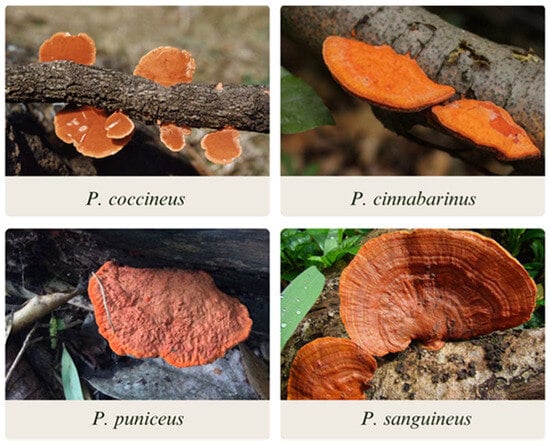
Figure 1
Open AccessReview
Toward Circular Economy: Potentials of Spent Coffee Grounds in Bioproducts and Chemical Production
by
Hisham Ahmed, Rasaq S. Abolore, Swarna Jaiswal and Amit K. Jaiswal
Biomass 2024, 4(2), 286-312; https://doi.org/10.3390/biomass4020014 - 12 Apr 2024
Abstract
With growing concern over environmental sustainability and dwindling fossil resources, it is crucial to prioritise the development of alternative feedstocks to replace fossil resources. Spent coffee grounds (SCGs) are an environmental burden with an estimated six million tons being generated on a wet
[...] Read more.
With growing concern over environmental sustainability and dwindling fossil resources, it is crucial to prioritise the development of alternative feedstocks to replace fossil resources. Spent coffee grounds (SCGs) are an environmental burden with an estimated six million tons being generated on a wet basis annually, globally. SCGs are rich in cellulose, lignin, protein, lipids, polyphenols and other bioactive compounds which are important raw materials for use in industries including pharmaceuticals and cosmetics. Furthermore, the energy sector has the potential to capitalize on the high calorific value of SCGs for biofuel and biogas production, offering a sustainable alternative to fossil fuels. SCGs are readily available, abundant, and cheap, however, SCGs are currently underutilized, and a significant amount are dumped into landfills. This review explores the potential of SCGs as a source of a value-added compound through various conversion technologies employed in the valorisation of SCGs into biochar, biofuel, and important chemical building blocks. The state-of-the-art, current knowledge, future research to stimulate the creation of sustainable products, and the challenges and economic feasibility of exploring SCGs in a biorefinery context are presented.
Full article
(This article belongs to the Special Issue Fate and Migration of Biomass Products)
►▼
Show Figures
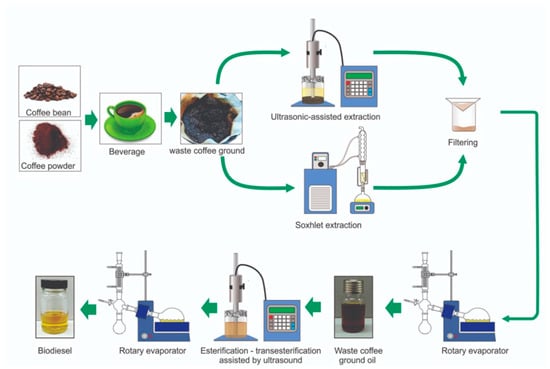
Figure 1
Open AccessArticle
Study of Compost Based on Sewage Sludge and Different Structural Materials
by
Przemysław Kosobucki
Biomass 2024, 4(2), 273-285; https://doi.org/10.3390/biomass4020013 - 04 Apr 2024
Abstract
►▼
Show Figures
The characterization of compost compositions on the basis of sewage sludge and structural materials (straw, sawdust, bark) composting is described. A comparison of the methods most often used for composting and characterization of structural materials is also presented. Sewage sludge and structural materials
[...] Read more.
The characterization of compost compositions on the basis of sewage sludge and structural materials (straw, sawdust, bark) composting is described. A comparison of the methods most often used for composting and characterization of structural materials is also presented. Sewage sludge and structural materials were mixed in different ratios and composted in piles (laboratory scale) for 3 months. During this time, the composting process was controlled using standard methods. The bioavailability of some xenobiotics in an agriculture experiment (using beans) was also investigated.
Full article
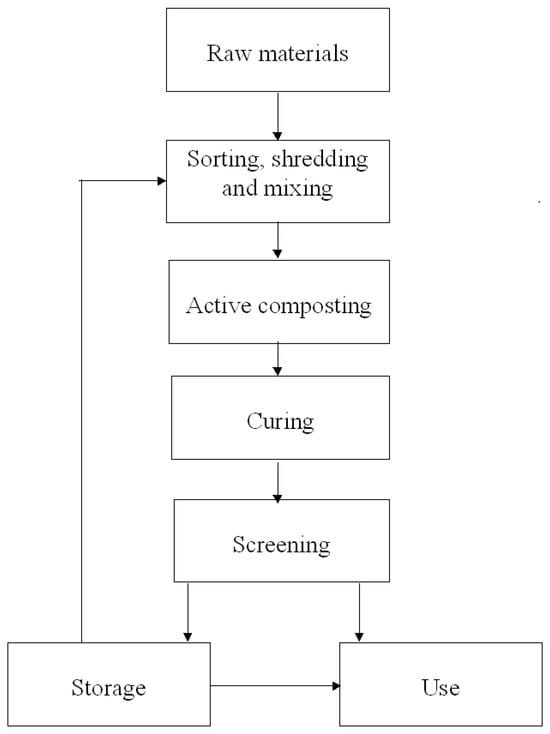
Figure 1
Open AccessReview
A Review on Biochar as an Adsorbent for Pb(II) Removal from Water
by
Pushpita Kumkum and Sandeep Kumar
Biomass 2024, 4(2), 243-272; https://doi.org/10.3390/biomass4020012 - 02 Apr 2024
Abstract
►▼
Show Figures
Heavy metal contamination in drinking water is a growing concern due to its severe health effects on humans. Among the many metals, lead (Pb), which is a toxic and harmful element, has the most widespread global distribution. Pb pollution is a major problem
[...] Read more.
Heavy metal contamination in drinking water is a growing concern due to its severe health effects on humans. Among the many metals, lead (Pb), which is a toxic and harmful element, has the most widespread global distribution. Pb pollution is a major problem of water pollution in developing countries and nations. The most common sources of lead in drinking water are lead pipes, faucets, and plumbing fixtures. Adsorption is the most efficient method for metal removal, and activated carbon has been used widely in many applications as an effective adsorbent, but its high production costs have created the necessity for a low-cost alternative adsorbent. Biochar can be a cost-effective substitute for activated carbon in lead adsorption because of its porous structure, irregular surface, high surface-to-volume ratio, and presence of oxygenated functional groups. Extensive research has explored the remarkable potential of biochar in adsorbing Pb from water and wastewater through batch and column studies. Despite its efficacy in Pb removal, several challenges hinder the real application of biochar as an adsorbent. These challenges include variability in the adsorption capacity due to the diverse range of biomass feedstocks, production processes, pH dependence, potential desorption, or a leaching of Pb from the biochar back into the solution; the regeneration and reutilization of spent biochar; and a lack of studies on scalability issues for its application as an adsorbent. This manuscript aims to review the last ten years of research, highlighting the opportunities and engineering challenges associated with using biochar for Pb removal from water. Biochar production and activation methods, kinetics, adsorption isotherms, mechanisms, regeneration, and adsorption capacities with process conditions are discussed. The objective is to provide a comprehensive resource that can guide future researchers and practitioners in addressing engineering challenges.
Full article
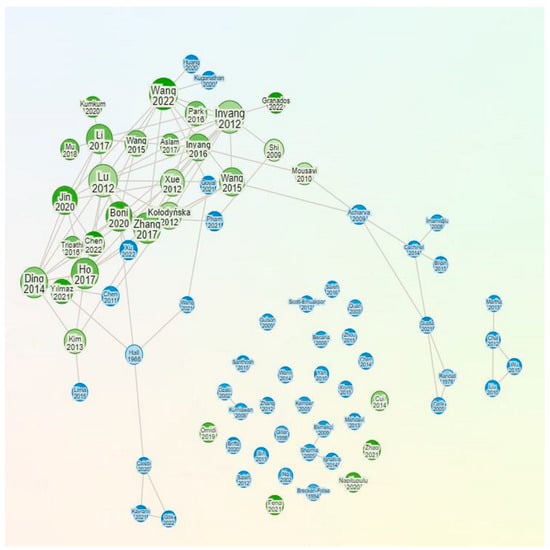
Figure 1
Open AccessPerspective
High Added-Value by-Products from Biomass: A Case Study Unveiling Opportunities for Strengthening the Agroindustry Value Chain
by
Filipe Kayodè Felisberto Dos Santos, Ian Gardel Carvalho Barcellos-Silva, Odilon Leite-Barbosa, Rayssa Ribeiro, Yasmin Cunha-Silva and Valdir Florencio Veiga-Junior
Biomass 2024, 4(2), 217-242; https://doi.org/10.3390/biomass4020011 - 01 Apr 2024
Abstract
The current era witnesses a remarkable advancement in biomass utilization, guided by the principles of green chemistry and biorefinery and the comprehensive exploitation of plant-based raw materials. Predominantly, large-scale production methods have been pursued, akin to approaches in the oil industry, enabling the
[...] Read more.
The current era witnesses a remarkable advancement in biomass utilization, guided by the principles of green chemistry and biorefinery and the comprehensive exploitation of plant-based raw materials. Predominantly, large-scale production methods have been pursued, akin to approaches in the oil industry, enabling the incorporation of novel products into energy and petrochemical markets. However, the viability of such systems on a small and medium scale is hindered by logistical challenges and the constraints of economies of scale. For small agricultural producers and food processing companies, the complete utilization of biomass transcends environmental responsibility, evolving into a strategy for survival through the diversification of by-products with enhanced value. The state of Rio de Janeiro in Brazil presents a range of population dynamics, geographical features, climate conditions, and agricultural production patterns that closely resemble those found in various tropical countries and agricultural regions worldwide. This region, sustaining a green belt supporting 17 million people, provides an apt case study for investigating chemical compounds with potential value among agro-industrial residues, which can motivate the creation of a lucrative biotechnological industry. Examples include naringenin and hesperidin from oranges and lemons, epi-gallo-catechin gallate from bananas, caffeic acids from coffee, and the bromelain enzyme from pineapples. This study addresses the challenges associated with developing biotechnological alternatives within the agroindustry, considering economic, technological, logistical, and market-related aspects. The insights from examining the Brazilian state of Rio de Janeiro will contribute to the broader discourse on sustainable biomass utilization and the creation of value-added by-products.
Full article
(This article belongs to the Special Issue Biorefineries, Circular Cities, and the Bioeconomy)
►▼
Show Figures
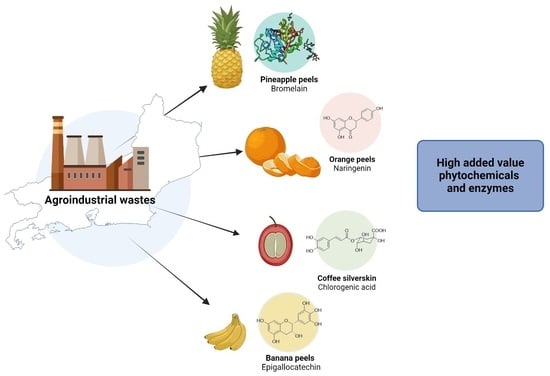
Graphical abstract
Open AccessArticle
Exploring the Antioxidant Properties of Citrus limon (Lemon) Peel Ultrasound Extract after the Cloud Point Extraction Method
by
Vassilis Athanasiadis, Theodoros Chatzimitakos, Martha Mantiniotou, Eleni Bozinou and Stavros I. Lalas
Biomass 2024, 4(1), 202-216; https://doi.org/10.3390/biomass4010010 - 01 Mar 2024
Abstract
►▼
Show Figures
Each year, a substantial amount of food is discarded around the globe. A significant portion of this waste consists of by-products derived from Citrus fruits such as lemons. The purpose of this research is to examine the polyphenol extraction and the antioxidant ability
[...] Read more.
Each year, a substantial amount of food is discarded around the globe. A significant portion of this waste consists of by-products derived from Citrus fruits such as lemons. The purpose of this research is to examine the polyphenol extraction and the antioxidant ability of lemon peel using cloud point extraction (CPE), a sustainable approach. CPE was conducted using three steps with a 20% w/v concentration of Span 20 as the surfactant, which has a critical micellar concentration of 6.13 × 10−5 mol/L. The pH was set at 7 and a salt concentration of 20% was maintained at 45 °C for 20 min. The subsequent outcomes of the analysis were obtained: total polyphenol content (TPC): 526.32 mg gallic acid equivalents per liter; total flavonoid content (TFC): 90.22 mg rutin equivalents per liter; FRAP, DPPH, and hydrogen peroxide assays: 2.40, 2.68 and 1.03 mmol ascorbic acid equivalents per liter, respectively, and 168.63 mg/L ascorbic acid content. The quantification of the polyphenolic compounds through High-Performance Liquid Chromatography showed that the most abundant compounds in the lemon peels are eriocitrin (159.43 mg/L) and hesperidin (135.21 mg/L). The results indicate that the proposed CPE technique is successful in extracting antioxidant compounds from lemon peels. The generated extracts have the potential to be exploited as dietary additives to enhance human health and can also be utilized for nutraceuticals or pharmaceutical purposes.
Full article

Figure 1
Open AccessReview
Termite Microbial Symbiosis as a Model for Innovative Design of Lignocellulosic Future Biorefinery: Current Paradigms and Future Perspectives
by
Mudasir A. Dar, Rongrong Xie, Hossain M. Zabed, Shehbaz Ali, Daochen Zhu and Jianzhong Sun
Biomass 2024, 4(1), 180-201; https://doi.org/10.3390/biomass4010009 - 01 Mar 2024
Abstract
The hunt for renewable and alternative fuels has driven research towards the biological conversion of lignocellulosic biomass (LCB) into biofuels, including bioethanol and biohydrogen. Among the natural biomass utilization systems (NBUS), termites represent a unique and easy-to-access model system to study host–microbe interactions
[...] Read more.
The hunt for renewable and alternative fuels has driven research towards the biological conversion of lignocellulosic biomass (LCB) into biofuels, including bioethanol and biohydrogen. Among the natural biomass utilization systems (NBUS), termites represent a unique and easy-to-access model system to study host–microbe interactions towards lignocellulose bioconversion/valorization. Termites have gained significant interest due to their highly efficient lignocellulolytic systems. The wood-feeding termites apply a unique and stepwise process for the hydrolysis of lignin, hemicellulose, and cellulose via biocatalytic processes; therefore, mimicking their digestive metabolism and physiochemical gut environments might lay the foundation for an innovative design of nature-inspired biotechnology. This review highlights the gut system of termites, particularly the wood-feeding species, as a unique model for future biorefinery. The gut system of termites is a treasure-trove for prospecting novel microbial species, including protists, bacteria, and fungi, having higher biocatalytic efficiencies and biotechnological potentials. The significance of potential bacteria and fungi for harnessing the enzymes appropriate for lignocellulosic biorefinery is also discussed. Termite digestomes are rich sources of lignocellulases and related enzymes that could be utilized in various industrial processes and biomass-related applications. Consideration of the host and symbiont as a single functioning unit will be one of the most crucial strategies to expedite developments in termite-modeled biotechnology in the future.
Full article
(This article belongs to the Special Issue Innovative Systems for Biomass Crop Production and Use)
►▼
Show Figures

Figure 1
Open AccessArticle
Techno-Economic Analysis of Hemp Production, Logistics and Processing in the U.S
by
Asmita Khanal and Ajay Shah
Biomass 2024, 4(1), 164-179; https://doi.org/10.3390/biomass4010008 - 01 Mar 2024
Abstract
Industrial hemp is a versatile crop, and its products have important applications in the food, cosmetic, pharmaceutical, textile, paper and composite industries. Since its legalization in the U.S. in 2018, interest in growing and using hemp has been increasing. This study evaluated the
[...] Read more.
Industrial hemp is a versatile crop, and its products have important applications in the food, cosmetic, pharmaceutical, textile, paper and composite industries. Since its legalization in the U.S. in 2018, interest in growing and using hemp has been increasing. This study evaluated the techno-economics of hemp grain and fiber production, harvest and post-harvest logistics, the drying and storage of hemp grain, and the decortication of fiber stalks. The analysis was performed using a process modeling approach with data obtained from the literature considering a farm size of 162 ha (average U.S. farm size). The input parameters were used as distributed functions and the results obtained are reported as interquartile ranges after 10,000 Monte Carlo simulations. The total cost of producing and processing hemp grain and fiber was estimated to be in the interquartile range of USD 2911–3566 Mg−1 and USD 1155–1505 Mg−1, respectively. The costs of seed and fertilizer along with grain and fiber yields were found to be the major factors influencing field production costs, while costs associated with facilities and labor were the main costs in fiber processing. Despite the high resource requirements and processing costs, high-value applications of hemp grain and fiber show great potential to produce net incomes of USD 426–3701 Mg−1 and USD 1570–2016 Mg−1, respectively.
Full article
(This article belongs to the Special Issue Innovative Systems for Biomass Crop Production and Use)
►▼
Show Figures

Graphical abstract
Open AccessReview
An Updated Review of Recent Applications and Perspectives of Hydrogen Production from Biomass by Fermentation: A Comprehensive Analysis
by
Dayana Nascimento Dari, Isabelly Silveira Freitas, Francisco Izaias da Silva Aires, Rafael Leandro Fernandes Melo, Kaiany Moreira dos Santos, Patrick da Silva Sousa, Paulo Gonçalves de Sousa Junior, Antônio Luthierre Gama Cavalcante, Francisco Simão Neto, Jessica Lopes da Silva, Érico Carlos de Castro, Valdilane Santos Alexandre, Ana M. da S. Lima, Juliana de França Serpa, Maria C. M. de Souza and José C. S. dos Santos
Biomass 2024, 4(1), 132-163; https://doi.org/10.3390/biomass4010007 - 01 Mar 2024
Abstract
Fermentation is an oxygen-free biological process that produces hydrogen, a clean, renewable energy source with the potential to power a low-carbon economy. Bibliometric analysis is crucial in academic research to evaluate scientific production, identify trends and contributors, and map the development of a
[...] Read more.
Fermentation is an oxygen-free biological process that produces hydrogen, a clean, renewable energy source with the potential to power a low-carbon economy. Bibliometric analysis is crucial in academic research to evaluate scientific production, identify trends and contributors, and map the development of a field, providing valuable information to guide researchers and promote scientific innovation. This review provides an advanced bibliometric analysis and a future perspective on fermentation for hydrogen production. By searching WoS, we evaluated and refined 62,087 articles to 4493 articles. This allowed us to identify the most important journals, countries, institutions, and authors in the field. In addition, the ten most cited articles and the dominant research areas were identified. A keyword analysis revealed five research clusters that illustrate where research is progressing. The outlook indicates that a deeper understanding of microbiology and support from energy policy will drive the development of hydrogen from fermentation.
Full article
(This article belongs to the Topic Biomass for Energy, Chemicals and Materials)
►▼
Show Figures
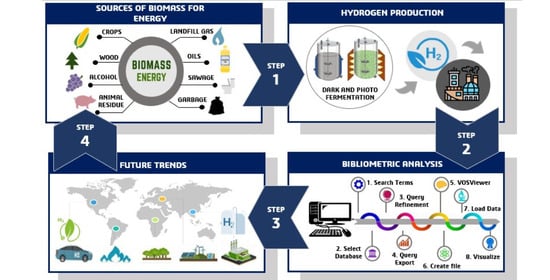
Graphical abstract
Open AccessReview
Orange Peel Waste as a Source of Bioactive Compounds and Valuable Products: Insights Based on Chemical Composition and Biorefining
by
Mariana Ortiz-Sanchez, Carlos Ariel Cardona Alzate and Juan Camilo Solarte-Toro
Biomass 2024, 4(1), 107-131; https://doi.org/10.3390/biomass4010006 - 02 Feb 2024
Abstract
Few valorization pathways have been implemented as alternatives to reduce the orange peel waste (OPW) disposal in landfills. OPW can be a source of income or economic savings in juice production factories since this waste is a potential source of value-added products (e.g.,
[...] Read more.
Few valorization pathways have been implemented as alternatives to reduce the orange peel waste (OPW) disposal in landfills. OPW can be a source of income or economic savings in juice production factories since this waste is a potential source of value-added products (e.g., bioactive compounds) and energy vectors (e.g., biogas). Valorization alternatives should be based on (i) orange peel chemical composition, (ii) market analysis, and (iii) availability. Nevertheless, few literature papers have highlighted the chemical composition change caused by the different juice production schemes as a potential opportunity to obtain different value-added products and biorefinery schemes. Thus, the aims of this review paper are related to (i) reviewing different orange fruit processing pathways, (ii) analyzing several OPW chemical compositions reported in the open literature, (iii) providing a summary of OPW extraction pathways for bioactive compounds production, and (iv) evaluating the effect of applying different extraction methods on bioactive compound extraction performance. This review includes a description of the OPW matrix, market insights, packaging, physicochemical characterization, processing technologies, and suggested biorefinery approaches. Finally, different extraction methods for obtaining bioactive compounds from OPW are compared. As a result, the supercritical fluid extraction process has the highest extraction performance and selectivity since this method extracted a high amount of hesperidin (8.18 g/kg OPW db.). In conclusion, OPW is a source of bioactive compounds and valuable products that can be introduced in juice-producing factories to increase product portfolio or economic savings by changing the energy matrix.
Full article
(This article belongs to the Special Issue Valorization of Agri-Food Waste Biomass for the Extraction of Bioactive Compounds)
►▼
Show Figures
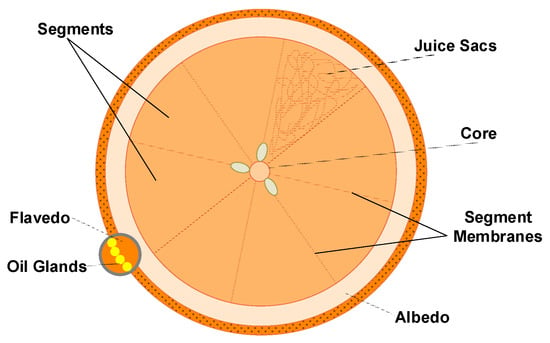
Figure 1
Open AccessArticle
Extraction of Cellulases Produced through Solid-State Fermentation by Trichoderma reesei CCT-2768 Using Green Coconut Fibers Pretreated by Steam Explosion Combined with Alkali
by
Alan O. Campos, Estéfani A. Asevedo, Pedro F. Souza Filho and Everaldo S. dos Santos
Biomass 2024, 4(1), 92-106; https://doi.org/10.3390/biomass4010005 - 02 Feb 2024
Abstract
The industrial processing of coconut to produce valuable foods, such as water and milk, generates large volumes of waste, especially the fruit shell. Despite this, material can be used in bioprocess applications, e.g., the production of enzymes, its recalcitrance hinders the cultivation of
[...] Read more.
The industrial processing of coconut to produce valuable foods, such as water and milk, generates large volumes of waste, especially the fruit shell. Despite this, material can be used in bioprocess applications, e.g., the production of enzymes, its recalcitrance hinders the cultivation of microorganisms, and low productivity is usually achieved. In this study, the production of cellulolytic enzymes through solid-state fermentation (SSF) and their extraction was investigated using the green coconut fiber pretreated by steam explosion, followed by alkali. The fungus Trichoderma reesei CCT-2768 was cultivated, using an experimental design, to study the effect of the water activity and the amount of biomass in the reactor. The combination of the pretreatment strategies yielded more porous biomass, with less hemicellulose (5.38%, compared to 10.15% of the raw biomass) and more cellulose (47.77% and 33.96% in the pretreated and raw biomasses, respectively). The water activity significantly affected the production of cellulases, with maximum activity yielded at the highest investigated value (0.995). Lastly, the extraction of the enzymes from the cultivation medium was studied, and a 9 g/L NaCl solution recovered the highest CMCase and FPase activities (5.19 and 1.19 U/g, respectively). This study provides an important contribution to the valorization of the coconut residue through (i) the application of the steam explosion technology to optimize the production of cellulases using the SSF technology and (ii) their extraction using different solvents.
Full article
(This article belongs to the Special Issue Pretreatment, Enzymatic Hydrolysis, and Fermentation Applied to Ethanol from Lignocellulosic Biomasses)
►▼
Show Figures
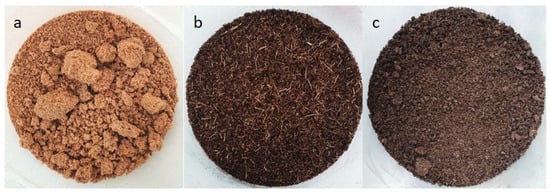
Figure 1
Open AccessReview
State of the Art Review of Attributes and Mechanical Properties of Hempcrete
by
Nima Asghari and Ali M. Memari
Biomass 2024, 4(1), 65-91; https://doi.org/10.3390/biomass4010004 - 02 Feb 2024
Abstract
The global surge in environmental pollution, largely attributed to industrialization, has fueled a pressing need for sustainable solutions. In response, the construction sector is increasingly focusing on bio-based materials such as hemp, recognized for its low environmental footprint and prominent carbon-negative quality. As
[...] Read more.
The global surge in environmental pollution, largely attributed to industrialization, has fueled a pressing need for sustainable solutions. In response, the construction sector is increasingly focusing on bio-based materials such as hemp, recognized for its low environmental footprint and prominent carbon-negative quality. As designers, housebuilders, and an environmentally conscious society pivot towards ecological alternatives to standard building materials, hempcrete emerges as a promising candidate. As a composite material mainly made from hemp hurd/shiv, water, and lime, hempcrete offers the ability to sequester carbon long after its incorporation into structures. As a result, the hemp cultivation process—which can be completed within less than four months—ensures that more carbon is absorbed during production and deployment than emitted, e.g., per one study, sequestration on the order of 300 kg of CO2 per m3 of hempcrete. In comparison to concrete, hempcrete offers a more sustainable footprint, given its recyclability post life cycle. This state-of-the-art review paper delves deep into different aspects of hempcrete, summarizing its multifaceted attributes, particularly its compressive strength. Based on the study conducted, the paper also suggests strategies to augment this strength, thereby transitioning hempcrete from a non-load-bearing material to one capable of shouldering significant weight. As architects and designers consistently strive to align their projects with high ecological standards, focusing not just on aesthetic appeal but also environmental compatibility, hempcrete becomes an increasingly fitting solution for the future of construction.
Full article
(This article belongs to the Special Issue Innovative Systems for Biomass Crop Production and Use)
►▼
Show Figures
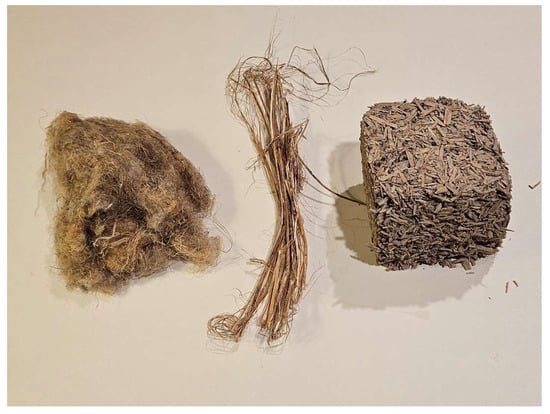
Figure 1
Open AccessArticle
Utilization of Blackthorn Plums (Prunus spinosa) and Sweet Cherry (Prunus avium) Kernel Oil: Assessment of Chemical Composition, Antioxidant Activity, and Oxidative Stability
by
Vassilis Athanasiadis, Theodoros Chatzimitakos, Konstantina Kotsou, Dimitrios Kalompatsios, Eleni Bozinou and Stavros I. Lalas
Biomass 2024, 4(1), 49-64; https://doi.org/10.3390/biomass4010003 - 02 Jan 2024
Abstract
Prunus avium L. and Prunus spinosa L. are valuable fruit-bearing trees known for their bioactive compounds and medicinal properties. However, limited research exists regarding their kernel oils. This study aimed to compare the chemical composition, quality parameters, and bioactive potential of the kernel
[...] Read more.
Prunus avium L. and Prunus spinosa L. are valuable fruit-bearing trees known for their bioactive compounds and medicinal properties. However, limited research exists regarding their kernel oils. This study aimed to compare the chemical composition, quality parameters, and bioactive potential of the kernel oils extracted from Prunus avium L. and Prunus spinosa L. The kernel oils’ fatty acid and tocopherol profiles were characterized, and the presence of bioactive compounds were identified and quantified. Total polyphenol content (TPC) and antioxidant activity (AAC) were also measured, indicating the presence of bioactive compounds in both oils. Additionally, the main quality parameters, including oxidative status, were evaluated. The fatty acid analysis revealed a higher proportion of polyunsaturated fatty acids compared to monounsaturated fatty acids in both kernel oil samples. Linoleic acid (57–64%) and oleic acid (18–29%) were the major fatty acids in both Prunus avium L. and Prunus spinosa L. kernel oils. α-Eleostearic acid (11.87%) was quantified only in Prunus avium kernel oil. Furthermore, the α-, β-, γ-, and δ-tocopherol content were determined, and it was found that both kernel oils contained γ-tocopherol as the major tocopherol (~204–237 mg/Kg). TPC in Prunus avium L. kernel oil was measured at 9.5 mg gallic acid equivalents (GAE)/Kg and recorded as ~316% higher TPC than Prunus spinosa L. kernel oil. However, the recorded AAC were 11.87 and 14.22 μmol Trolox equivalent (TE)/Kg oil, respectively. Both oils recorded low peroxide values (~1.50 mmol H2O2/Kg), and low TBARS value (~0.4 mmol malondialdehyde equivalents, MDAE/Kg oil), but high p-anisidine value (23–32). The results indicated that both Prunus avium L. and Prunus spinosa L. kernel oils exhibited unique chemical compositions.
Full article
(This article belongs to the Special Issue Food Science and Emerging Technologies in Biomass Processing)
Open AccessArticle
Comparative Feasibility and Environmental Life Cycle Assessment of Cotton Stalks Gasification and Pyrolysis
by
Ioannis Vaskalis and Anastasia Zabaniotou
Biomass 2024, 4(1), 23-48; https://doi.org/10.3390/biomass4010002 - 02 Jan 2024
Abstract
In a circular economy, significant emphasis is given to the energetic valorization of agricultural byproducts. Cotton stalks are suitable as a feedstock for the production of bioenergy due to their high energy content. This study’s main focal areas are the economic viability and
[...] Read more.
In a circular economy, significant emphasis is given to the energetic valorization of agricultural byproducts. Cotton stalks are suitable as a feedstock for the production of bioenergy due to their high energy content. This study’s main focal areas are the economic viability and environmental implications of a system that can gasify or pyrolyze 25,500 tons of cotton stalk annually. To learn more about how gasification and pyrolysis affect the environment, a life cycle assessment (LCA) was conducted. This analysis evaluates the whole value chain and covers all stages of the cotton supply chain from cradle to gate, including production, harvest, transportation, and utilization. According to the findings, both systems exhibit economic viability, generating sizable profits and having quick payback times. However, despite its larger initial expenditure of EUR 2.74 million, the pyrolysis unit ends up being the better option because it has a payback period of 1.58 years, a return on investment (ROI) of 58% and a net present value (NPV) of EUR 21.5 million. Gasification is still an economically attractive alternative with a lower initial investment (EUR 1.81 million), despite having a lower ROI (36%) and NPV (EUR 10.52 million), as well as a longer payback period (2.41 years). However, the environmental implications of the gasification option are generally higher than those of pyrolysis. The impacts of gasification on fossil depletion (FDP) were estimated to be 5.7 million kg oil eq., compared to 5.3 million kg oil eq. for pyrolysis. Similarly, gasification resulted in 41.55 million kg U235 eq. and pyrolysis in 41.5 million kg U235 eq. related to impacts on ionizing radiation (IRP_HE). Other impact categories that emerge as the most important are freshwater eutrophication (FEP) and marine eutrophication (MEP).
Full article
(This article belongs to the Special Issue Pyrolysis as a Tool to Produce Fuels and Chemicals)
►▼
Show Figures

Figure 1
Open AccessArticle
Laccase and Biomass Production via Submerged Cultivation of Pleurotus ostreatus Using Wine Lees
by
Georgios Bakratsas, Kyriakos Antoniadis, Panagiotis E. Athanasiou, Petros Katapodis and Haralambos Stamatis
Biomass 2024, 4(1), 1-22; https://doi.org/10.3390/biomass4010001 - 19 Dec 2023
Cited by 1
Abstract
Large quantities of wine lees are produced annually by the wine industry. The high phenolic content makes them unsuitable for disposal in the environment or animal feed without a suitable treatment. In this study, wine lees were treated by Pleurotus ostreatus in submerged
[...] Read more.
Large quantities of wine lees are produced annually by the wine industry. The high phenolic content makes them unsuitable for disposal in the environment or animal feed without a suitable treatment. In this study, wine lees were treated by Pleurotus ostreatus in submerged cultivation, producing a high-value biomass and elevated levels of laccase, an important industrial enzyme. Biomass and laccase production reached 21 g/L and 74,000 Units/L, respectively, at the optimal conditions of initial pH 6.0, 20% v/v wine lees, 30 g/L glucose, and 20 g/L yeast extract, while decolorization and dephenolization rates of the waste were over 90%. The mycelial biomass was rich in proteins and essential amino acids reaching up to 43% and 16% per dry weight, respectively. Carbohydrates and lipids were the second richest bioactive compound in biomass, with values of 29.4 ± 2.7% and 29.5 ± 2.7%, respectively. The crude laccase in the culture supernatant was purified via a simple two-step purification procedure by 4.4-fold with a recovery of 44%. The molecular weight of the enzyme was determined to be 62 kDa via SDS electrophoresis. Enzyme activity was optimal at pH 5.0 and 70 °C. The activation energy of the enzyme was calculated at a value of 20.0 ± 0.2 kJ/mol. The pH stability and thermostability of the purified laccase were studied. The enzyme was remarkably stable at pH 8.0 and at temperatures up to 40 °C. The thermal inactivation energy of the enzyme was determined to be 76.0 ± 1.2 kJ/mol. The thermodynamic parameters (ΔH*, ΔG*, and ΔS*) for the thermal deactivation of the purified laccase at a temperature range of 20–60 °C were: 73.8 ≤ ΔH* ≤ 74.3 kJ·mol−1, 98.7 ≤ ΔG* ≤ 101.9 kJ·mol−1, and −90.5 ≤ ΔS* ≤ −84.3 J·mol−1·K−1. Wine lees could be ideal substrates of fungal cultivation for laccase production and biomass with a high protein content in an eco-friendlier way.
Full article
(This article belongs to the Special Issue Fate and Migration of Biomass Products)
►▼
Show Figures

Graphical abstract
Open AccessArticle
Maximizing the Extraction of Bioactive Compounds from Diospyros kaki Peel through the Use of a Pulsed Electric Field and Ultrasound Extraction
by
Vassilis Athanasiadis, Theodoros Chatzimitakos, Eleni Bozinou, Konstantina Kotsou, Dimitrios Palaiogiannis and Stavros I. Lalas
Biomass 2023, 3(4), 422-440; https://doi.org/10.3390/biomass3040025 - 04 Dec 2023
Cited by 1
Abstract
The persimmon fruit (Diospyros kaki Thunb.) is renowned for its exceptional health benefits, which can be attributed to its abundance of bioactive compounds. This study aimed to optimize the extraction of bioactive compounds from persimmon peel, an underexplored waste biomass, within the
[...] Read more.
The persimmon fruit (Diospyros kaki Thunb.) is renowned for its exceptional health benefits, which can be attributed to its abundance of bioactive compounds. This study aimed to optimize the extraction of bioactive compounds from persimmon peel, an underexplored waste biomass, within the frame of sustainability and a circular economy. For this reason, a comprehensive multi-factor extraction approach was employed. Specifically, diverse methods including a pulsed electric field and ultrasonication combined with simple stirring were explored. Through this systematic approach, the most efficient extraction process was determined, resulting in elevated yields of bioactive compounds, including polyphenols, ascorbic acid, and total carotenoids. Among the identified phenolic compounds, rutin emerged as the most abundant, with concentrations reaching up to 172.86 μg/g. Utilizing partial least squares analysis, the maximum predicted values for the bioactive compounds were determined, with total polyphenols reaching 7.17 mg GAE/g, ascorbic acid at 4.93 mg/g, and total carotenoids at 386.47 μg CtE/g. The antioxidant activity of the extracts was evaluated with the ferric reducing antioxidant power (FRAP), 2,2-diphenyl-1-picrylhydrazyl (DPPH) radical, and H2O2 scavenging assays. The recorded antioxidant performance underscored the substantial potential of persimmon peels as a source of cost-effective extracts with high antioxidant activity. This study not only contributes to optimizing the bioactive compounds’ extraction from persimmon peel but also highlights the process’s viability by producing valuable extracts with antioxidant properties at low cost.
Full article
(This article belongs to the Special Issue Food Science and Emerging Technologies in Biomass Processing)
►▼
Show Figures

Graphical abstract
Open AccessArticle
A Comparison of Forest Biomass and Conventional Harvesting Effects on Estimated Erosion, Best Management Practice Implementation, Ground Cover, and Residual Woody Debris in Virginia
by
Austin M. Garren, Michael Chad Bolding, Scott M. Barrett, Eric M. Hawks, Wallace Michael Aust and Thomas Adam Coates
Biomass 2023, 3(4), 403-421; https://doi.org/10.3390/biomass3040024 - 17 Nov 2023
Abstract
Expanding markets for renewable energy feedstocks have increased demand for woody biomass. Concerns associated with forest biomass harvesting include increased erosion, the applicability of conventional forestry Best Management Practices (BMPs) for protecting water quality, and reduced woody debris retention for soil nutrients and
[...] Read more.
Expanding markets for renewable energy feedstocks have increased demand for woody biomass. Concerns associated with forest biomass harvesting include increased erosion, the applicability of conventional forestry Best Management Practices (BMPs) for protecting water quality, and reduced woody debris retention for soil nutrients and cover. We regionally compared the data and results from three prior independent studies that estimated erosion, BMP implementation, and residual woody debris following biomass and conventional forest harvests in the Mountains, Piedmont, and Coastal Plain of Virginia. Estimated erosion was higher in the Mountains due to steep slopes and operational challenges. Mountain skid trails were particularly concerning, comprising only 8.47% of the total area but from 37.9 to 81.1% of the total site-wide estimated erosion. BMP implementation varied by region and harvest type, with biomass sites having better implementation than conventional sites, and conventional Mountain sites having lower implementation than other regions. Sufficient woody debris remained for BMPs on both harvest types in all regions, with conventional Mountain sites retaining twice that of Coastal Plain sites. BMPs reduced the estimated erosion on both site types suggesting increased implementation could reduce potential erosion in problematic areas. Therefore, proper BMP implementation should be ensured, particularly in Mountainous terrain, regardless of harvest type.
Full article
(This article belongs to the Special Issue Innovative Systems for Biomass Crop Production and Use)
►▼
Show Figures

Figure 1
Open AccessEditorial
Renewal of Scope for Biomass
by
Lasse Rosendahl
Biomass 2023, 3(4), 402; https://doi.org/10.3390/biomass3040023 - 15 Nov 2023
Abstract
Biomass was started in 2021 with the aim of providing an open access platform for scientific communications within the field of biomass and its uses [...]
Full article
Open AccessReview
Pulsed Electric Field Applications for the Extraction of Bioactive Compounds from Food Waste and By-Products: A Critical Review
by
Theodoros Chatzimitakos, Vassilis Athanasiadis, Dimitrios Kalompatsios, Martha Mantiniotou, Eleni Bozinou and Stavros I. Lalas
Biomass 2023, 3(4), 367-401; https://doi.org/10.3390/biomass3040022 - 06 Nov 2023
Cited by 3
Abstract
The food processing industry is a continuously developing sector that uses innovative technologies to efficiently process food products. During processing, food industries generate substantial amounts of by-products in the form of waste materials. This food waste consists of organic matter rich in bioactive
[...] Read more.
The food processing industry is a continuously developing sector that uses innovative technologies to efficiently process food products. During processing, food industries generate substantial amounts of by-products in the form of waste materials. This food waste consists of organic matter rich in bioactive compounds, such as polyphenols, carotenoids, and flavonoids. Improper management of food waste can adversely affect both the environment and human health, leading to environmental pollution and the release of greenhouse gas emissions. Thus, proper food waste management has become an urgent global issue. The presence of bioactive compounds (mainly polyphenols, flavonoids, and anthocyanins, but also carotenoids, alkaloids, proteins, lipids, and carbohydrates) in food waste holds the potential to transform them into valuable resources. Several sectors, including food and energy, have recognized food waste as an innovative source. Recently, much emphasis has been placed on optimizing the extraction yield of such bioactive compounds through the utilization of environmentally friendly and sustainable methodologies and solvents. Pulsed electric field (PEF)-assisted extraction is an emerging technique that holds promise for the utilization of waste materials. PEF technology can efficiently optimize the extraction of valuable compounds within a shorter time while minimizing solvent and energy consumption. In this review, we provide a comprehensive overview of the current state of PEF technology and its implications for recovering bioactive compounds from food waste. The integration of innovative technologies like PEF in the food processing industry can play a crucial role in managing food waste sustainably, reducing environmental impact, and harnessing the full potential of bioactive compounds contained in these waste materials. The objective of this critical review is to provide an overview of the utilization of PEF pretreatment for food by-products and to conduct a comparative analysis with other extraction techniques.
Full article
(This article belongs to the Special Issue Fate and Migration of Biomass Products)
►▼
Show Figures

Figure 1
Highly Accessed Articles
Latest Books
E-Mail Alert
News
Topics
Topic in
Energies, Materials, Processes, Catalysts, Biomass
Advances in Biomass Conversion
Topic Editors: Jacek Grams, Agnieszka RuppertDeadline: 28 June 2024
Topic in
Biomass, Energies, Materials, Molecules, Nanomaterials, Polymers
Biomass for Energy, Chemicals and Materials
Topic Editors: Shaohua Jiang, Changlei Xia, Shifeng Zhang, Xiaoshuai HanDeadline: 31 December 2025

Conferences
Special Issues
Special Issue in
Biomass
Biorefineries, Circular Cities, and the Bioeconomy
Guest Editors: Kaveh Khalilpour, Andrew HoadleyDeadline: 10 May 2024
Special Issue in
Biomass
Biomass Materials: Synthesis, Functionalisation, and Applications
Guest Editors: George Z. Papageorgiou, Evangelia TaraniDeadline: 18 June 2024
Special Issue in
Biomass
Innovative Systems for Biomass Crop Production and Use
Guest Editors: Daniel Ciolkosz, Jude LiuDeadline: 22 July 2024
Special Issue in
Biomass
Selected Papers from the "2nd European Congress on Renewable Energy and Sustainable Development—Energy Trends 2024"
Guest Editor: Olga TironDeadline: 31 March 2025







